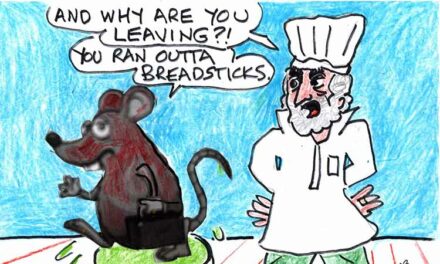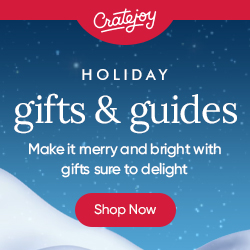Dinner at Five?! Has the U.S. Become a Retirement Home?
Newest young-people trend: acting old
By Ed Goldman
I have seen the future—and it’s the early-bird special at Denny’s.
This is because many in this country, including those of the younger persuasion, have decided to move to the Midwest—at least when it’s time for dinner.
Clock bait
“Trendy new restaurants are closing their kitchens at 8 p.m.,” reports The Wall Street Journal (itself an early riser). “Restaurants are now seating 10 percent of diners between 2 p.m. and 5 p.m. …Dinner parties are starting as early as 5 p.m.,” the paper reports.
I’m not sure why you’d even call a meal that starts at 5 p.m. “dinner.” “A late lunch,” sure. “Happy Hour,” okay. I’d even go for a hybrid like “lupper or “dunch.” But dinner?
In the 1980s, on a visit with my in-laws in the Midwest, I discovered that on Sundays “dinner” and “supper” were two entirely different animals (though still the same species).
“Dinner” was the big meal you had at about 1 or 2 p.m., presumably after attending, ditching early or entirely skipping church. It consisted of some sort of roast (beef, ham or pork), mashed potatoes, thick mushroom gravy, green-bean casserole, seafoam Jell-o salad with tiny, trapped marshmallows heroically fighting their way to the surface, and a hefty wedge of blueberry pie (with ice cream) for dessert.
Meanwhile, “supper” arrived around 7 p.m. This was a very casual affair, usually served on plastic or paper plates in front of the television—”The Ed Sullivan Show” aired an hour earlier in the Midwest, I learned on that first trip. It featured cold, sliced leftover roast on sandwiches, potatoes (now converted to mashed-potato croquettes) and cold green-bean casserole sprinkled with vinaigrette, as though it had been a salad in hiding the whole time.
The seafoam Jell-o salad from “dinner” survived, now topped with Cool Whip and rechristened “dessert.” (Forget the blueberry pie; that was a goner by the conclusion of “dinner.”)
Our country’s evolving meal schedule may reflect an overall paradigm shift, experts maintain. Exactly what they’re experts in would be a good topic if someone were to revive the TV show “Unsolved Mysteries”—and, in the process, resurrect its host, the late Robert Stack. (Actually, many of us thought he was already dead when he hosted the show the first time around. But I digress.)
We seem to be rising earlier and going nighty-night barely after sunset. This is a surprising development to me since I always assumed the American early-bird ethic was inspired by agriculture’s predominance in the formative years of our country—and that, as we skewed increasingly urban, or even suburban, people of all ages began to trend night-owly. But no.
I had my first sense of this when I moved to Sacramento in the mid-1970s, when its focus and marketing were still on farming, and found it had a nightly newscast that began at 9 p.m.—and that “The Tonight Show starring Johnny Carson” came on at 10:30 p.m. instead of 11:45 p.m., as it did in Los Angeles and New York. Since the show was taped around 5:30 p.m., the actual time it was played back was relatively inconsequential: it was still out-of-date if a news story broke in early evening; but since that rarely happened, Johnny’s monologues still seemed as though they were being delivered in “real time.”
“Even Broadway, in the city that supposedly never sleeps, has moved up curtain times,” reported the Journal. “A third of the shows now running on Broadway start in the 7 o’clock hour on Fridays.”
Now, this may not be a bad idea after all. When I was a kid in New York City, and my dad would pull backstage-fireman duty at one of the Broadway theatres (all of which were constructed of especially igneous tinder) my mom would take me to a show that started at 8:30 p.m. but didn’t get out until close to midnight. As a result, I was privileged to see Robert Preston as “The Music Man,” but fell into a deep sleep as soon as he told the people of River City, Iowa that they were in terrible, terrible trouble because a pool table had been installed in a billiard parlor.
I also got to see Rex Harrison as the upper-class Brit Henry Higgins meet and berate Julie Andrews as the cockney flower vendor Eliza Doolittle; but by the time he’d transformed her into “My Fair Lady” I was snoozing peacefully, swathed in the car coat my dad had left with my mom in case she needed to create an impromptu bed in my seat.
Today I keep that car coat in the trunk of my car in case a passenger gets cold or I feel like pulling over on a long drive and catching a nap before an early dinner.
Ed Goldman's column appears almost every Monday, Wednesday and Friday. A former daily columnist for the Sacramento Business Journal, as well as monthly columnist for Sacramento Magazine and Comstock’s Business Magazine, he’s the author of five books, two plays and one musical (so far).













